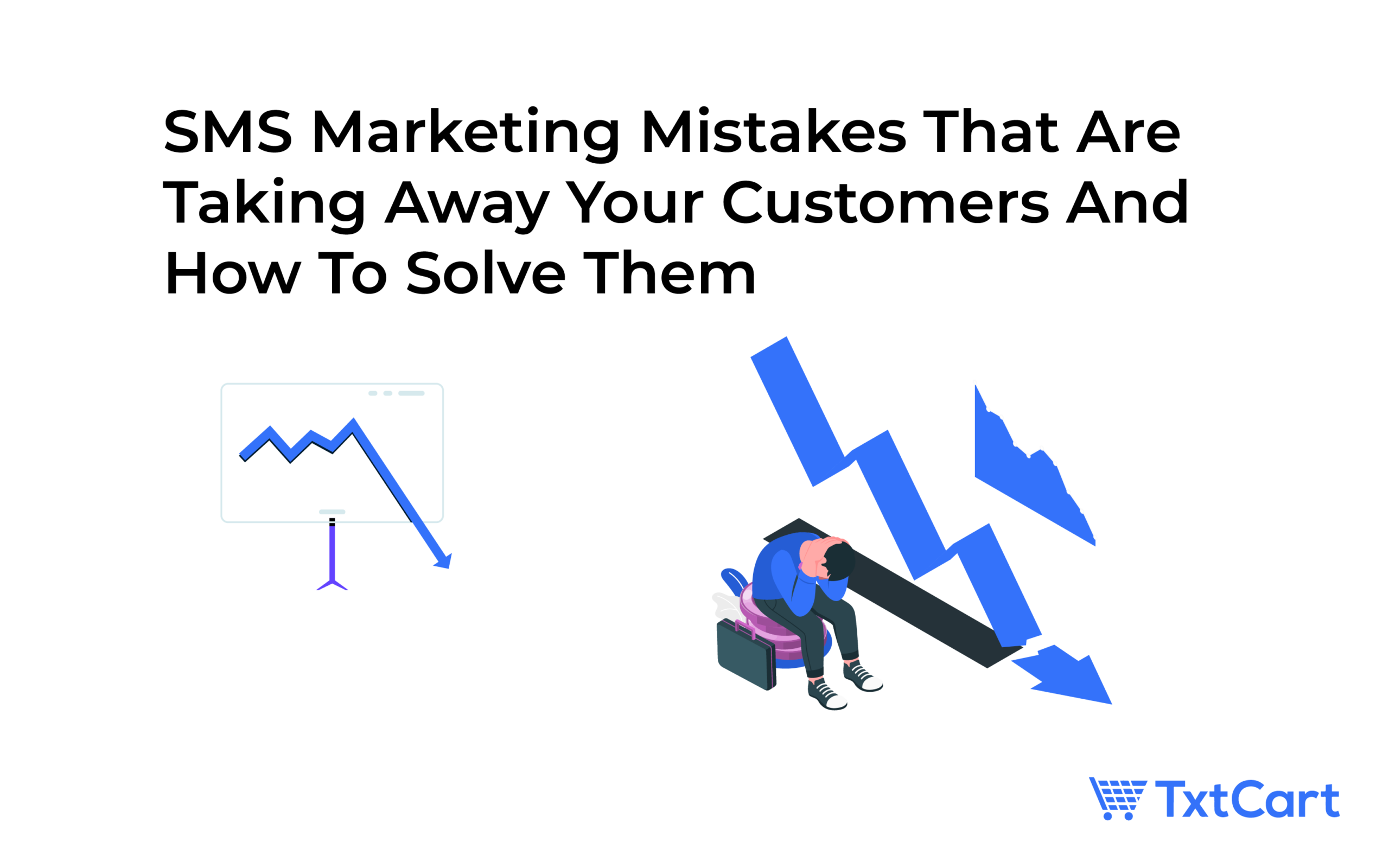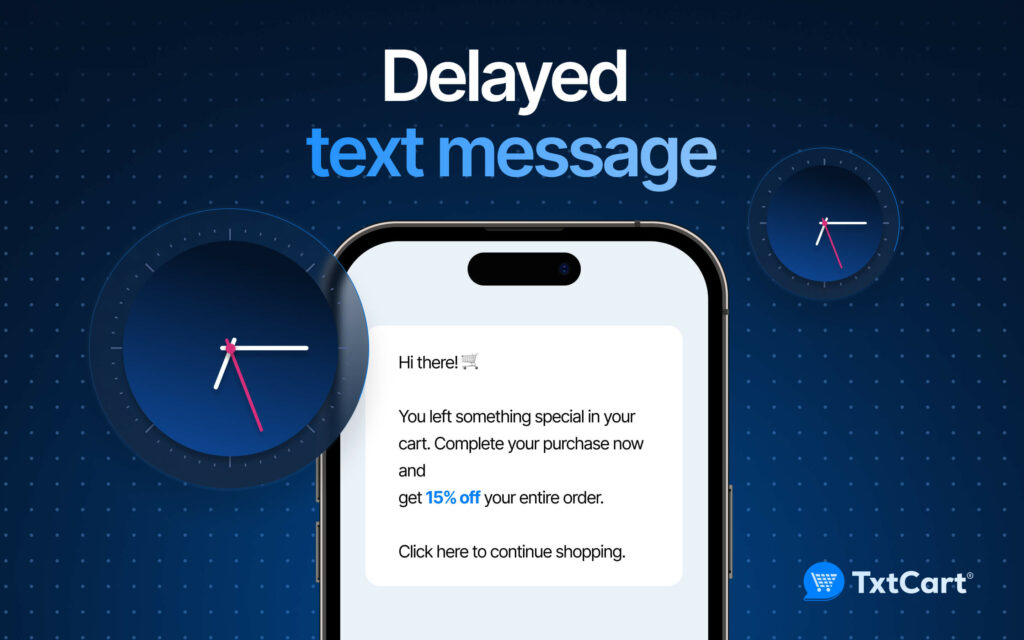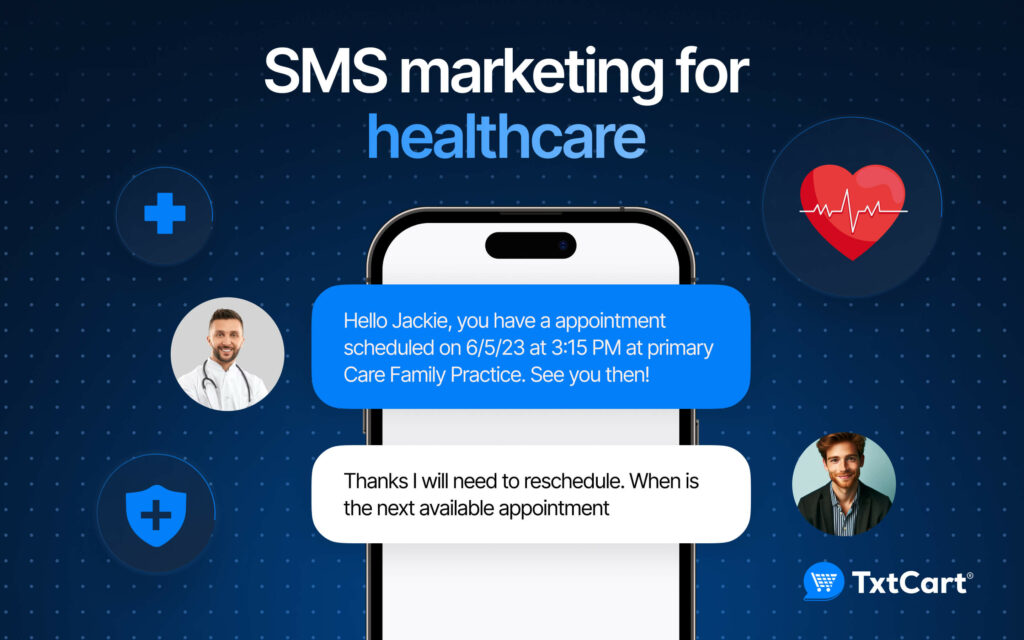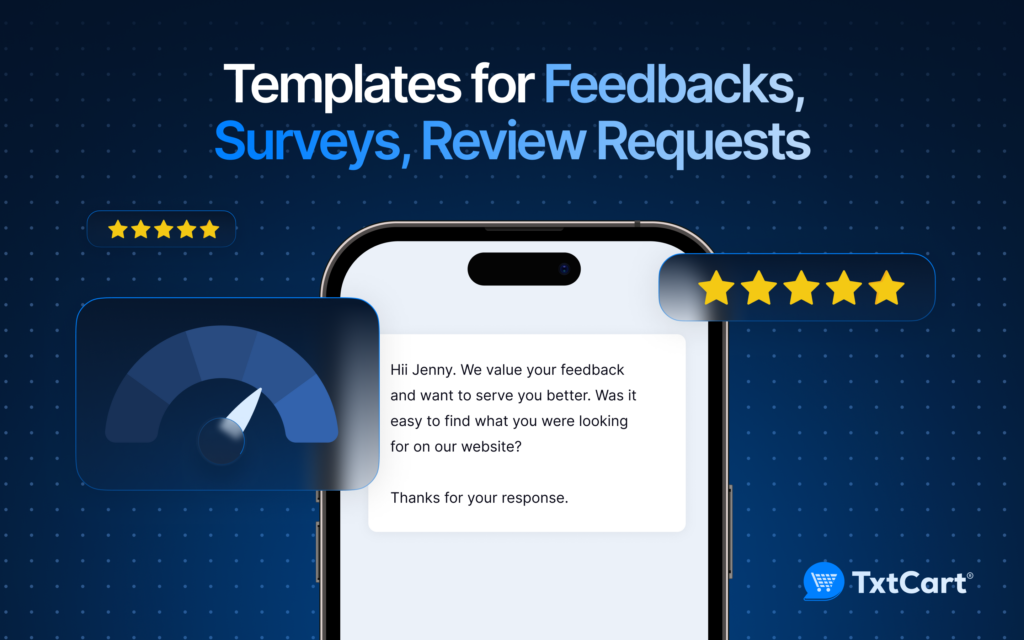Want to make the most of text messages? Avoid these SMS marketing mistakes.
Even though SMS marketing is a fairly low-cost mode of communication and marketing, it still involves money and effort.
Moreover, if you have a strong SMS list that runs into thousands or lakhs, the sheer number of text messages sent can add up to a huge cost.
And what if all those resources put into campaigns don’t bring you your desired results? It means you’re definitely going wrong somewhere.
But do you know what exactly are the mistakes you could be making?
In this blog, we’ll go through many small and big SMS marketing mistakes that eCommerce stores tend to make in their campaigns. And we’ll also tell you how to avoid those mistakes.
17 SMS marketing mistakes and how to avoid them
1. Sending text messages without permission/opt-in
Sending marketing text messages to people without their permission is prohibited by law. People subscribe to many different brands. They’re okay to receive text messages from those brands because they’ve signed up for those SMS lists. And so, when you send SMSes without permission, it can make the receiver feel annoyed.
Solution: The first message you send to your new leads should always be an opt-in message. It’s the best way to build your SMS list and start your relationship with new leads on the right note.
2. Not giving an opt-out option
Among the best practices to follow for SMS marketing, including an opt-out option is probably one of the most critical factors. It’s possible that some of your SMS subscribers aren’t interested in your messages anymore. Or your messages aren’t relevant to them and they want to stop receiving them. Including an opt-out gives them the freedom to leave that today’s customers expect from brands.
Solution: Always include an opt-out option in your SMS. It’s as simple as adding a line: To opt out, reply STOP.
Example of an SMS with opt-out:
Welcome to the XYZ brand updates. We will be sending you texts about the ongoing and upcoming deals and discounts to save you BIG on your favorite products. Reply HELP for help and STOP to unsubscribe.
3. Sending untimely messages
Imagine sending a promotional SMS on a Monday morning when people are in the middle of work. Or in the middle of the night when they’re asleep. People read most SMSes within three minutes of receiving it. And it’s likely that your untimely messages would go unread if you send them at odd hours. Moreover, people might opt-out from your list because that’s the best way they can keep disturbance away.
Solution: Time your SMSes based on your industry and customers’ locations. Try A/B testing to figure out which time works best for you.
4. Sending texts to opted-out customers
So you include opt-out options in all your SMS texts. That’s great! But when customers opt-out, do you update your SMS list to remove those numbers? If you keep sending messages to customers even after they’ve opted out, it can get annoying for them. Moreover, they could mark your number as spam. While some SMS marketing tools have automated options of removing opted-out numbers, you should still cross check to confirm.
Solution: Use an SMS marketing tool that automatically removes opted-out numbers. Plus, do a manual check from time-to-time to keep your list clean and updated.
5. Providing only one-way communication
Did you know, customers are 4.5x more likely to respond to text messages from brands than any other channel used for communication? But to be able to interact with your customers over SMS, you’ll have to first enable two-way communication. By making your communication one-way, you’d be limiting your customers’ ability to reach out to you.
Solution: Have a two-way SMS communication approach for your SMS marketing.
Example of a two-way SMS campaign:
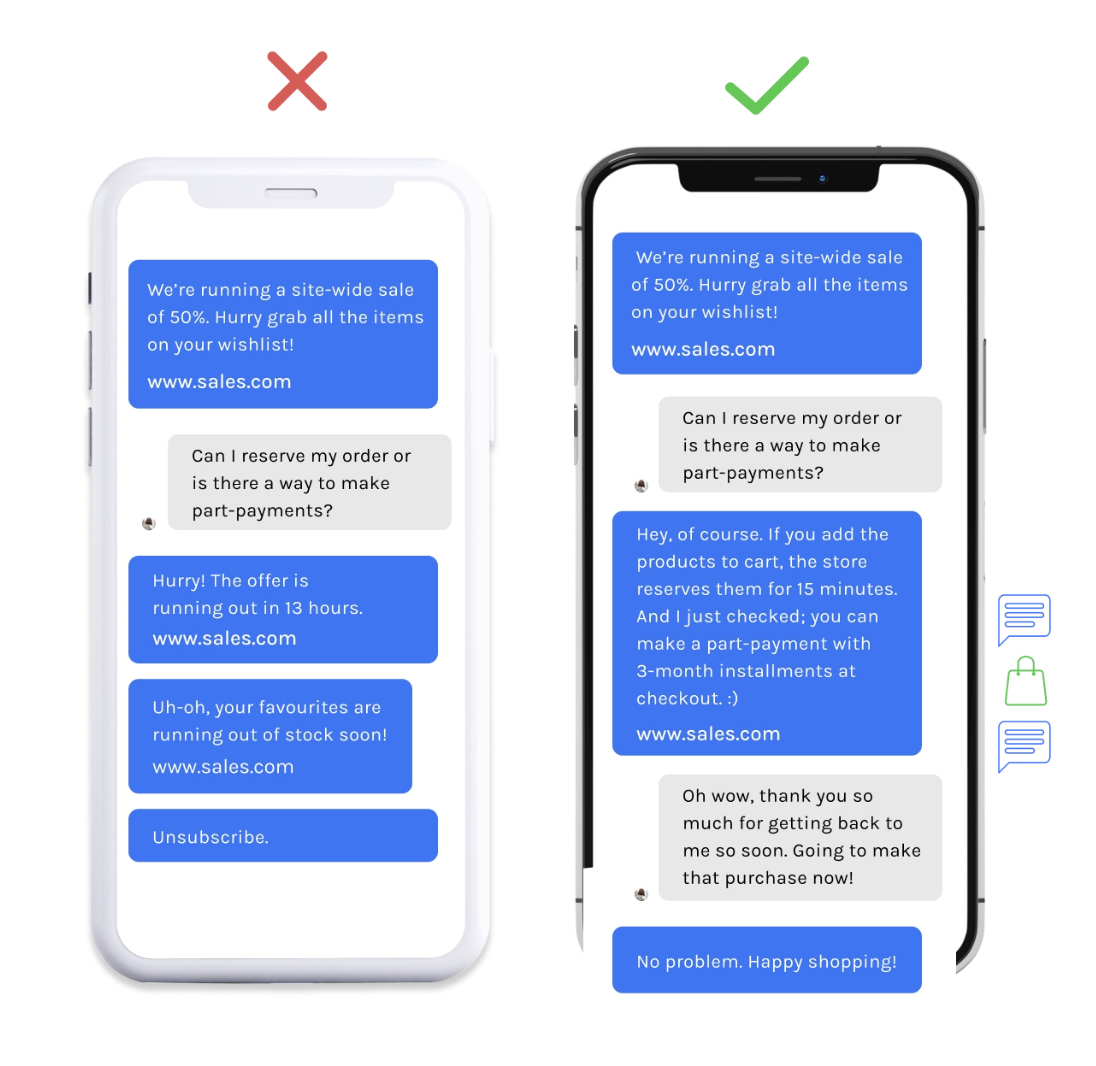
6. Sending messages from random phone numbers
If you send messages to your customers from different phone numbers, they might get confused. They might not identify your number and ignore the message. Many customers might want to save your number for easy identification. But if you send messages from different numbers, they won’t be able to save your number.
Solution: Use just one number and name for all your SMS marketing campaigns.
7. Sending texts without any strategy
Every business has to have an overarching marketing strategy and many different channels under it. Each channel can have its own strategy, however, one that aligns with the overall strategy. If you don’t follow this method, you may leave customers confused.
For example, say you send a random one-off SMS to customers inviting references of their friends. But customers can’t read any other details about this on any of your other channels. It’s possible that this half baked information leaves them confused. Ultimately, this SMS campaign will bring no results.
Solution: To maximize returns from your SMS marketing efforts, make it a part of your larger marketing strategy and plan it well.
8. Sending a link to a non-optimized website
SMS is an instant communication channel. Once customers receive your message, they’re most likely to open it within a few minutes and click on the link in the SMS. But what if the website link you share is not optimized for mobile? It’s going to affect the customers’ experience. They’re most probably going to leave the site within seconds.
Solution: Make sure the website link you share via SMS is optimized for mobile viewing.
9. Buying SMS lists
To begin with, buying SMS lists is a bad practice because it’s a legal violation to send marketing text messages to people without their consent. These people don’t know you. It’s possible they’ve never even heard about your brand, and aren’t interested in it. By sending texts to random numbers, there’s a higher chance of getting blocked, marked as spam, or blacklisted.
Solution: Grow your list organically. Even if it grows slowly, you’ll collect contacts of genuine people who want to stay in touch with you.
10. Sending too many texts
While there’s no rule of thumb for the number of messages one can or cannot send, you’ll have to limit the number of texts you send. If you send too many unwanted messages, it can overwhelm your customers. Let’s face the truth, your customers might be receiving messages from other brands too. And they don’t have the time and patience to go through all the messages.
Solution: Send messages only if needed, and not just for the sake of sending them.
11. Not including CTAs in the text
Text messages have a higher clickthrough rate than other communication channels such as email – almost 30x higher! But again, not every SMS will require a CTA. Some messages are just updates and don’t need customers to take any actions. However, when your SMS strategy has a set goal, such as sales or sign-ups, etc. you should definitely include a clear CTA that tells customers what they should do.
Solution: Include clear and straightforward CTAs in your SMSes depending on your campaign goals.
Example of a text message with a call-to-action:
Looking for a little black dress for your weekend night out with friends? Order from our latest collection inspired by top celebrities: <link> Get express shipping if you order in the next 48 hours!
12. Sending the same text multiple times
Respect your customers and give credit to their memory. Sending the same text multiple times can put people off. Customers are intelligent people and will remember your message if they’ve read it once. There’s no need to send the same message multiple times. Moreover, when you do this, your customers might think their phone number has been saved multiple times in your list and that you don’t manage your list well.
Solution: Send one text message only once. If you want, tweak your messages and send a new message.
13. Not sending personalized messages
SMS is an extremely personal mode of communication. Customers who’ve signed up for your SMS notifications would expect personalization. 92% of marketers agree that customers expect a personalized experience.
When you send a message that’s relevant to customers, for example recommending products that complement their recent purchase, they feel good about the fact that you’re taking keen interest in them.
Solution: Make use of data, segment your customers, put effort into personalizing your SMS communication and campaigns for your different customers.
14. Skipping A/B testing
Testing any campaign before you hit send to your entire list is one of the best practices. It can help you avoid costly mistakes. Some common mistakes are: typos, broken links, bad timing, etc. To test the waters, you could even try A/B testing for your SMS campaigns to see which version performs better.
Solution: Make A/B testing a mandatory practice for your SMS marketing campaigns.
15. Not monitoring SMS campaigns
No matter how great you think your text messages are, if you don’t monitor their performance, you will not know whether or not they’re performing well. Hence, it is important to monitor and analyze the performance of your SMS marketing campaigns. You should monitor metrics such as open rate, click through rate, conversions, response rate, bounce rate, unsubscribe rate, etc.
Solution: Measure the metrics relevant to each of your SMS marketing campaigns to help you optimize different campaigns.
16. Not optimizing SMS campaigns
Not only is it important to monitor and analyze your SMS campaigns, it is more important to optimize your campaigns based on the results of their performance analysis. When you find that certain text messages aren’t driving results, you should tweak them. Because when you don’t optimize your texts, all your efforts and resources go to waste.
Solution: Always monitor your SMS campaign performance and optimize to gain the maximum returns from your investment – efforts, resources, and money.
17. Not using a cross-channel strategy
You might be using different communication and marketing channels for your eCommerce business. For example, social media, website, email, SMS, WhatsApp, etc. But if you’re not integrating them or not using a cross-channel approach, you’re missing out on a lot of opportunities.
For example, you can easily use SMS to grow your social media following and vice versa. When you limit your campaigns to just one channel, you limit your success opportunities. In the same way, using only one channel, for example, only email or only SMS can also restrict the success of your marketing campaigns. Hence, it’s best to use as many communication channels.
Solution: Use many different marketing channels and integrate them so that one channel benefits the other.
How can you ensure maximum ROI from your SMS marketing campaigns?
To begin with, you should try to avoid all the mistakes listed above. However, mistakes are inevitable. The more important thing is to turn your mistakes into learning.
To set up a successful SMS marketing strategy and to avoid mistakes from the start, you need to have a smart SMS marketing automation tool in place. A good tool will help you automate repetitive tasks and avoid mistakes.
Explore TxtCart – one of the best SMS marketing and automation tools for Shopify stores.
